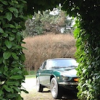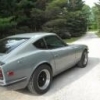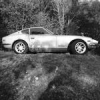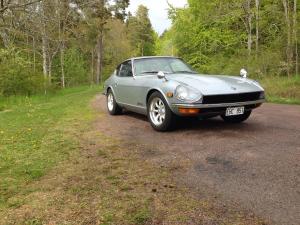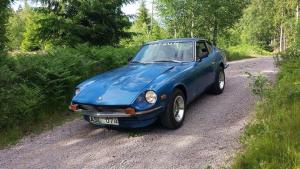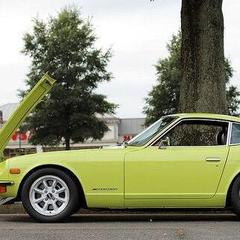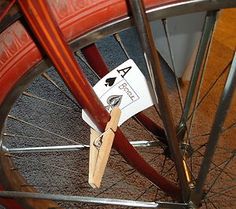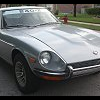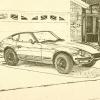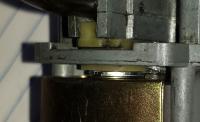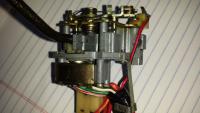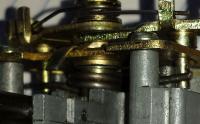Like many of us with 40+ year old cars, components get old and tired, among them being our Turn Signal Switch Assembly. I had a recurring problem of not flashing the front passenger turn light and the dash indicator light. At first, I disassembled the slide switch and cleaned the contacts. This helped for a while.
Then next time I disassembled the unit, the contacts looked clean enough so I did some continuity tests on the switch itself. the lights worked OK with the un-mounted switch but failed again after re-assembly. Jiggling the loosely mounted switch got an intermittent operation. Observing the operation of the switch I noticed there was a lot of free play in the various mechanisms.
The switch consists of two main diecast components, the main casting and the pivot casting. The pivot casting mounts the turn signal lever, has detent balls/springs, connects to the slide switch through a nylon coupling. The top of the pivot casting has a press fitted stepped shank. This shank serves a bearing point and inserts into the top return pawl assembly. Between the pawl assembly and pivot casting is a torsion spring that snaps the pivot casting and lever back to the center detent position as the pawl cancels the signal.
Upon dis-assembly I noticed two sources of the free play. First the nylon coupling connecting the switch to the pivot casting has shrunk over time. This is not unusual for nylon as it normally retains some water from the manufacturing process.
The second issue was more problematic. The stepped shank press fitted into the pivot casting was now only loosely captured. And since the torsion spring continually presses on the shank, it tilted the shank and caused a wobble. This worsened the twisting of the nylon coupling. When the shank was pushed down into its former seat in the pivot casting, it was square and true. But as soon as any side load was applied, it cocked and the wobble began again.
My first corrective action was to insert a 0.050"thick #8 washer over the post on the switch between the nylon coupling and the
existing brass washer.
This did a lot to control the twisting of the nylon coupling but the switch operation was intermittent due to the wobbling of the pivot casting. It was obvious that the severe stress of the torsion spring on the stepped shank and the nature of the zinc diecast material was going to make any re-staking of the shank problematic and short lived. Examining the bottom plate of the pawl assembly revealed a doubling washer to aid in making adequate sides to pivot surface. It occurred to me that if I could insert a shim between the doubling washer and stepped shank, I could hold the shank square. Assembling without the spring and using a feeler gauges, I was able to determine the free space was just about 0.018". I knew brass washers of similar thickness were used in clockworks, so I headed down to the local Ace Hardware. They didn't have any washers that thin, but we found a #8 spring washer exactly the right thickness. Getting the spring back into position with the wobbly shank proved to be a challenge, but when finished the entire switch assembly now works as good as new - or even better.
If you attempt this repair, I would suggest NOT removing the torsion spring. When replacing the pawl mount plate, squeeze the pawl assemblies together, engage the stepped shank into the doubler washer, and firmly urge the plate into position to take the retaining screws.
If you look carefully at the above photos, you can identify the added washers.




